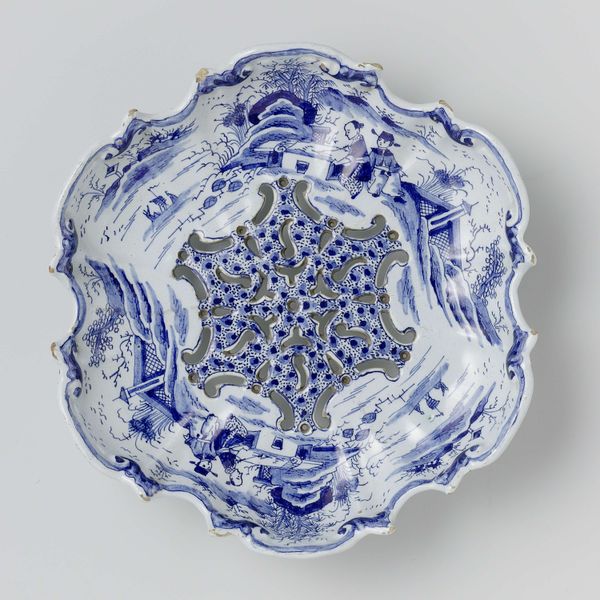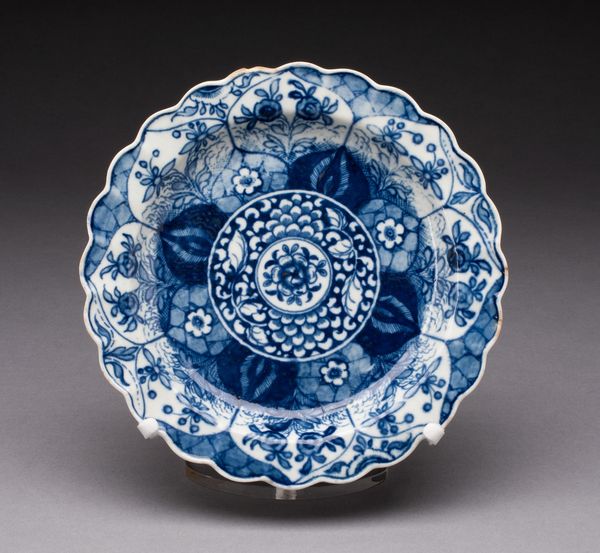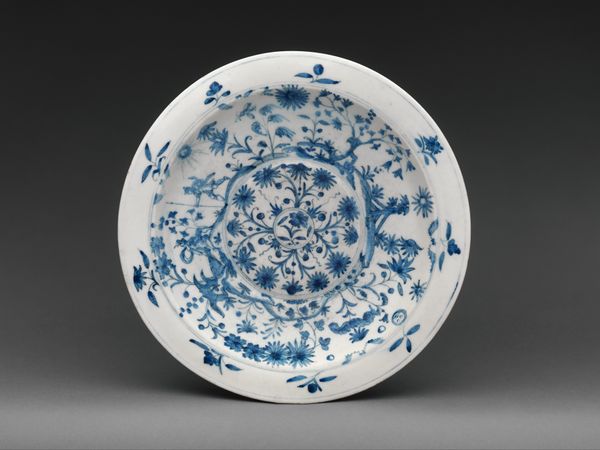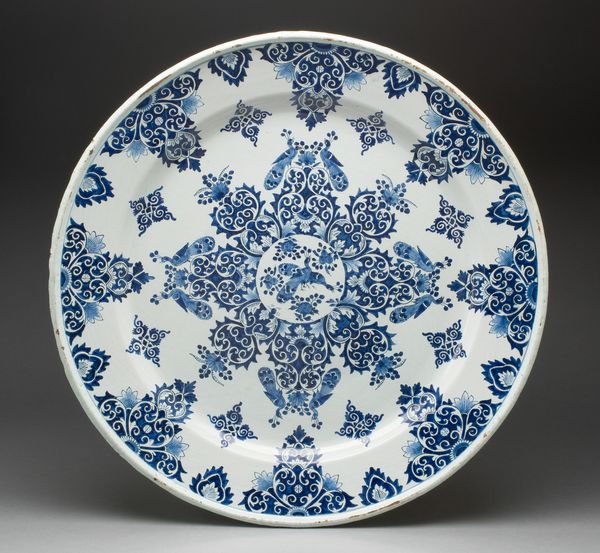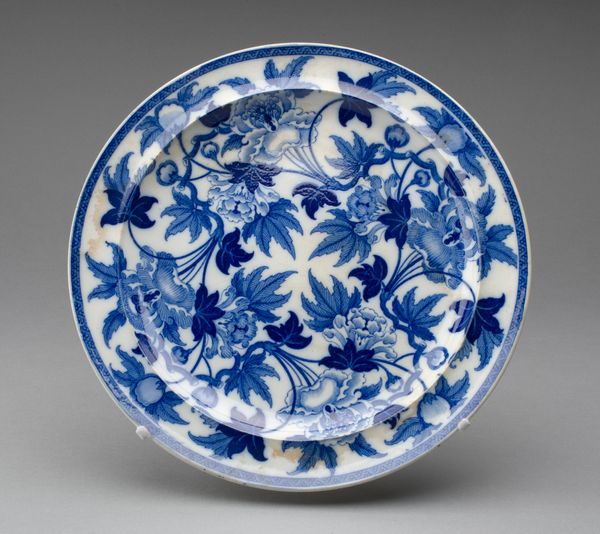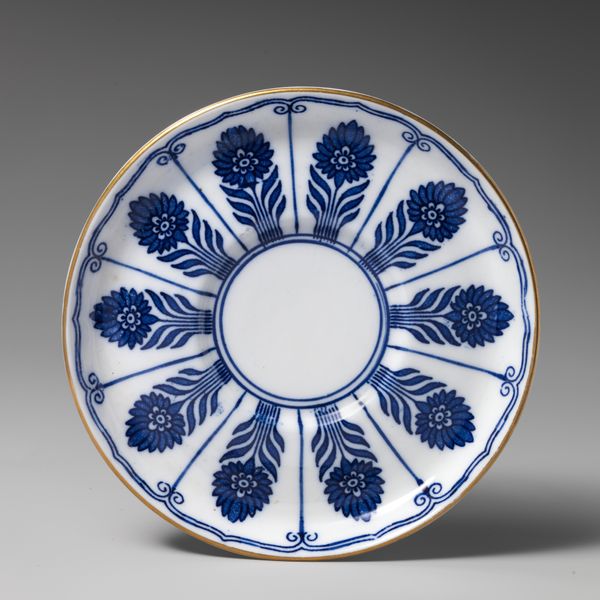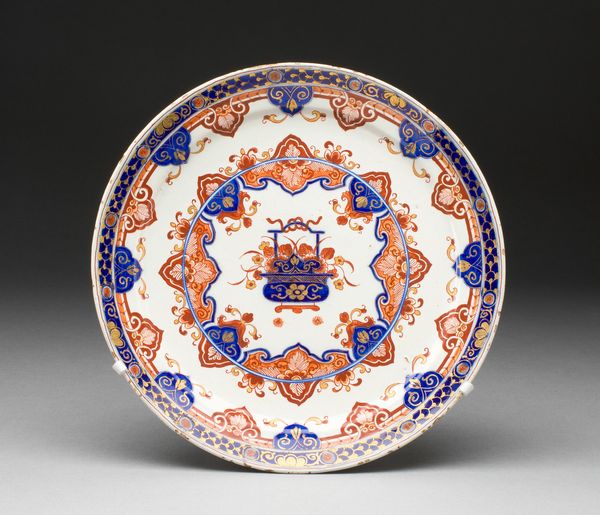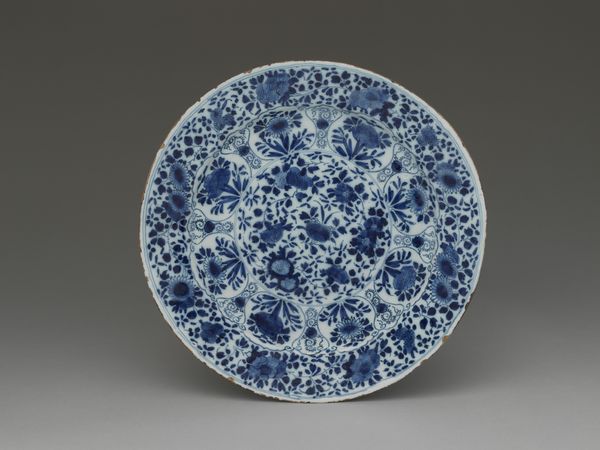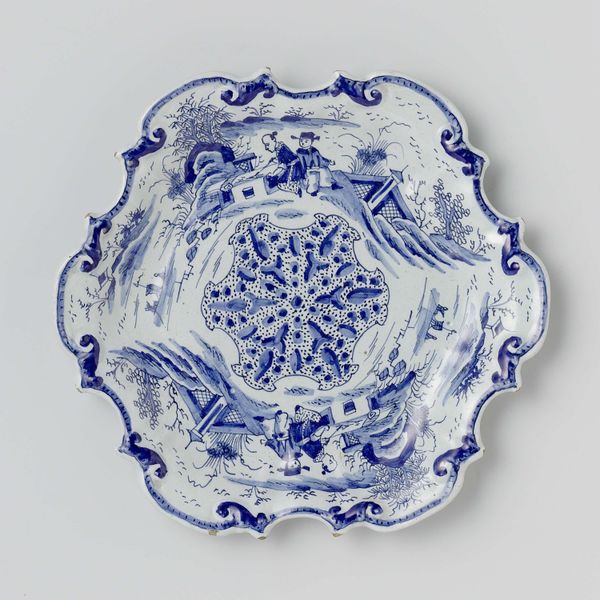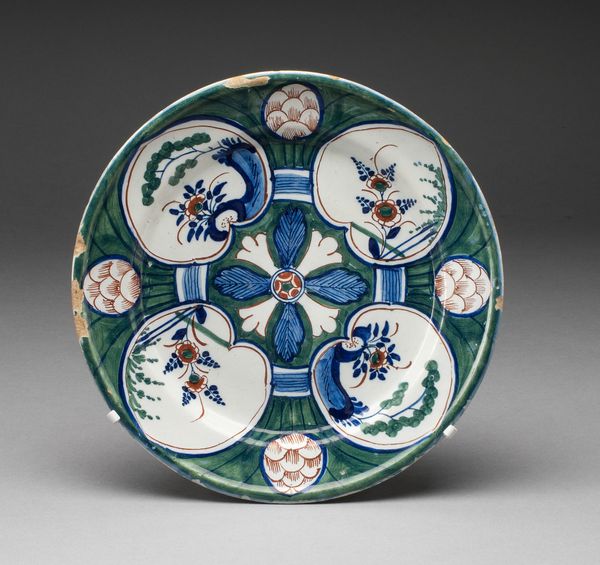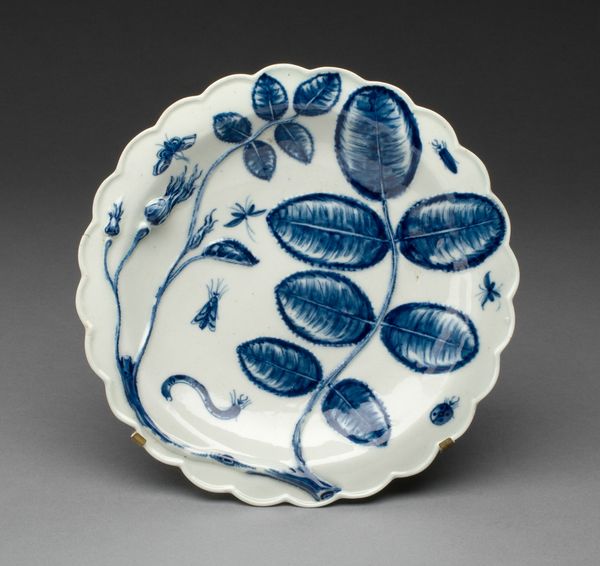
ceramic, porcelain
#
asian-art
#
ceramic
#
porcelain
#
decorative-art
Dimensions: 2 1/4 x 12 x 12 in. (5.7 x 30.5 x 30.5 cm)
Copyright: Public Domain
Editor: This "Dish," crafted in the late 18th century from porcelain, reminds me of grandma’s old china. I notice how each panel frames a different iteration of botanical themes, like the butterflies flitting among the flowers. It gives me a feeling of quaint serenity. What catches your eye about this decorative art piece? Curator: That’s lovely! Quaint serenity... It’s interesting how objects whisper across time, isn’t it? To me, beyond the pretty flowers, I see a little stage where cultures met. This "Dish," with its Asian artistry rendered in porcelain, whispers of global trade routes, and how patterns and ideas leap across continents. Have you thought about how porcelain becomes almost synonymous with "fine china"? Editor: That’s true! I was focusing on the flowers and butterflies but missed the bigger story of trade! Was blue and white pottery a typical commission? Curator: Precisely! And that blue and white color scheme was itself incredibly popular! Do you wonder why? It's beautiful of course, but what about its functionality? It became iconic because of its affordability of the color...But beyond that, imagine being a 18th century artisan adapting traditions for patrons across continents. A little act of translation across cultures, etched onto a dish, if you like! Editor: That really changes how I look at it! I am seeing global collaboration when looking at the motifs. Curator: Exactly! Now, every time I see blue-and-white porcelain, I think of a delicate story about connection. Editor: Me too. I won't forget how an artist mixes and matches ideas with global influences for future work!
Comments
minneapolisinstituteofart almost 2 years ago
⋮
The Dutch East India Company, founded in 1609, imported into Europe large quantities of Chinese porcelain, usually with bright blue-and-white floral patterns. Such thin, translucent porcelain was unknown in Europe at this time and became highly prized for its rarity and decorative qualities. Envious of this flourishing trade, Dutch potters soon began producing imitations of Chinese porcelain by painting pottery with similar motifs, as well as with images of European landscapes and biblical stories. The city of Delft in the Netherlands became an important center for this type of glazed earthenware.
Join the conversation
Join millions of artists and users on Artera today and experience the ultimate creative platform.
